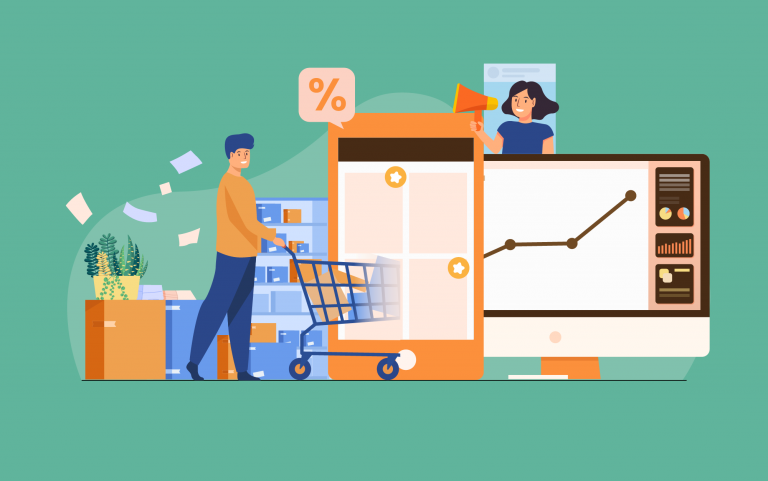Traditional business-to-business (B2B) business models are becoming obsolete as digital transformation takes over the world. This is one of the most pivotal challenges for businesses today especially if you’re aiming to stay current and competitive in the market. Increased customer demands. Messy and complex product catalogues. Inefficient payment solutions. We are on the edge of a major industrial change and the pressure for B2B commerce sellers is very real.
Going digital is not just about putting your product catalogue online, it’s about bringing an unforgettable and seamless online experience for your business buyers. And guess who represents 73 percent of B2B buyers today? Millennials. This generation are digital natives who, being familiar with stellar business-to-consumer (B2C) experiences, now inflict similar expectations on the B2B front.
B2B sellers including wholesalers, manufacturers, and distributors who fail at delivering an intuitive buying experience for their digitally native buyers will lose out on market opportunities particularly when a lot of big B2C giants such as Amazon have started to breach into the B2B market share. And no wonder, when global B2B eCommerce sales are predicted to reach over $6.6 trillion by 2020, surpassing B2C valued at $3.2 trillion, according to business consulting firm Frost and Sullivan.
Before we compare the differences between traditional commerce and digital commerce, let’s iron out some basics.
What is B2B ecommerce
Business-to business electronic commerce depicts all transactions of products and services – including marketing, selling, and distribution – through an online sales portal between companies or in our case, buyers and sellers. This is different as compared to a business-to-consumer transaction, which is between a company and non-business entities a.k.a individual consumers.
B2B transactions are generally much more complex and variable as opposed to B2C. In addition, buyers being larger entities, generate higher sales volumes constituting to more elaborate shipping requirements and regulatory impediments. The complexity of the B2B ecommerce market demands the need of a logical implementation process and innovative digital solutions.
So what factors are acting as catalysts for a rapidly growing digitisation in the commerce realm?
Rise of online B2B marketplaces
Most people would have bought something in a B2C online marketplace such as Amazon and Alibaba – both of which are also fast expanding into the B2B sector. As such, they expect nothing less than the access to millions of SKUs, a personalized shopping experience, quick checkouts, and seamless fulfilments within minutes.
With so many product sources available in the market, marketplaces provide an avenue for buyers to source for products from multiple third-party sellers. Statistics in 2019 revealed that 56 percent of B2B companies had an ecommerce site, and only 11 percent out of that had a marketplace. This is a window of opportunity for the wholesale distribution and manufacturing chain, paving the way for businesses to jump on and get ahead of the competition.
Without an online marketplace, your buyers are inundated with complex and messy product catalogues that are often incomplete. In a world of digital commerce, your products are readily accessible on a clean interface and easily displayed with just a point-and-click, providing more ease to buyers browsing for their next purchases.

Shift towards faster order fulfilment
As more B2B businesses make a move online, the demand for quick and efficient fulfilment processes increases and as mentioned above, millennials are at the forefront of driving this demand. This urgency sets the precedence for same-day deliveries and automation of the order process.
In traditional B2B commerce, admins are overwhelmed with a growing pool of customers and tons of paperwork, all of which is slow, costly, and inflicts a higher risk for human error. Digital processing of orders markedly reduces human error, and is cost efficient as orders made are immediately processed and prepared for shipping. Less time-consuming paperwork, more buyers can be handled at any given time.
Seamless payment disbursement
Traditional B2B payment methods tend to slow down transactions. Customers often don’t make upfront payments, but wait till they have received the products and services purchased using trade credit, or “net terms”. Invoices are subjected to various approval stages before they can be processed and not forgetting other fees and taxes that are part of cross-border transactions, adding to cash flow delays, and slowed growth.
This situation affects both buyers and sellers, with buyers having to assess each buyer’s risk and often have to forgo payments due to a lack of information or speed in closing the deal. At the same time, buyers face the struggle in negotiating various terms with multiple vendors and sometimes may have to settle for poor payment terms.
Thanks to technology and AI-driven solutions, B2B ecommerce has come a long way, creating a seamless journey through payment processes for buyers and sellers. There is now a shorter wait time, which offers credit options almost instantly within the payment platform and marketplaces. For example, offering a “net 60” payment option upon checkout.
Enhanced buying and selling experience
With the availability of online marketplaces, faster order fulfilment, and seamless payment processes, we are essentially giving customers or buyers what they want. And one of the factors they want is price transparency. Before digital, B2B buyers often work closely with sales reps to obtain price quotes from multiple sellers for the same products. Price comparison is a necessary, often time-consuming task for buyers, but has now been made easy with online marketplaces.
Many local manufacturers do not have a website, and even if they do, potential buyers are only able to view product information but are unable to complete a transaction. To act on their interest, they have to take an extra step to contact the manufacturer via email or a phone call in order to place orders. Because of this inconvenience, buyers tend to never progress from “interested” to “purchase”. A B2B ecommerce platform empowers manufacturers to create their own webshop and sell online, allowing buyers to navigate their offerings and make a purchase instantly.
When you set up a B2B marketplace and recruit your channel partners to act as sellers, you can more easily turn interested website visitors into actual buyers. Instead of having to contact a channel partner independently, visitors can navigate to your marketplace and compare partners’ offerings. As a result, your channel partners sell more — which also means more demand for your products. At the end of the day, sellers sell more and buyers are given the freedom to compare prices and make an informed purchase decision.

It’s easy to go digital
At Dropee, we believe that the local supply chain lacks connectivity between suppliers and SME business owners (retailers), thus, we saw the opportunity to provide better communication between both parties by creating an online platform for businesses to source and deal with one another in a faster, more effective and efficient way.
There is no better time to digitise your B2B business than now. Contact us today to schedule a demo or get listed on the largest B2B online marketplace in Malaysia.


